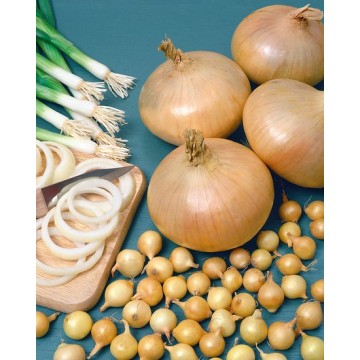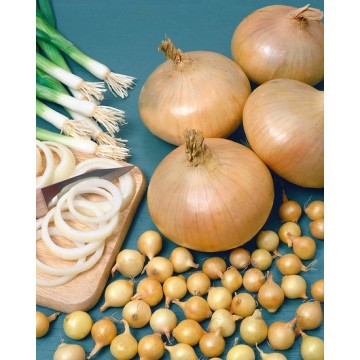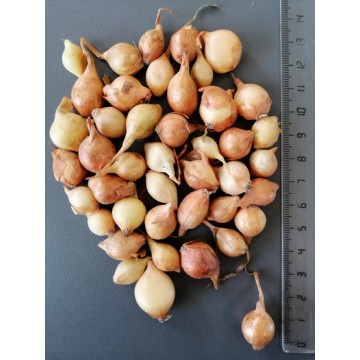Onion seedlings
Onion is a plant of the garlic family. It has medicinal properties, vitamins and rich mineral content: carotene, vitamins C, B1 and B2, essential oils, potassium, sodium, calcium, magnesium, iron, phosphorus. One way to grow onions is by planting onion seedlings. It is advisable to keep them at a constant temperature (fluctuation of no more than 1-2 °C) with a humidity of 70-75% until planting. Ventilation is essential, and it cannot be covered, so it is best stored in a net or open, moisture-free box. Planting should take place between April and May, when the soil still has sufficient moisture. The onion seedlings are inserted at a depth of 2-3 cm. The planting should be spaced 5-8 cm between bulbs and 20 cm between rows.
The seedlings are frost tolerant and can withstand spring frosts. It is advisable to grow in sandy loam or light loam soil. Onion seedlings are best grown where radishes, dill, lettuce, cucumbers, cabbage or tomatoes have been grown before. The earliest you can replant onion seedlings in the same place is 3-4 years later.
In hot weather in summer, watered every 10-15 days and weeded (3-5 times per summer). One month before harvesting, the onion seedlings no longer need to be watered. Fertilise with ammonium nitrate (10g/1m²) when the leaves are already 10 cm long. It is recommended that onion seedlings should be fertilised until mid-June at the latest, as fertilisation later than this prolongs the growing season. They are harvested at the end of August. After dropping, they are left on the beds for 6-10 days to dry out. Only when the onions are properly dried do they keep well over the winter.











